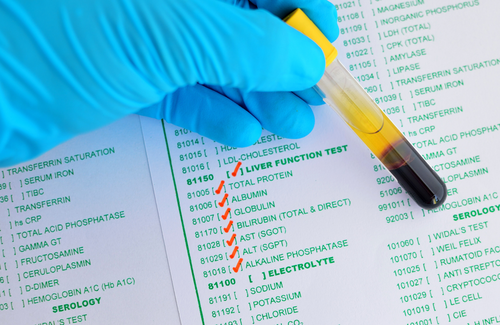High bilirubin levels may be more frequent in adolescents taking the protease inhibitor atazanavir (Reyataz) than in adults, Spanish investigators warn in the Journal of Adolescent Health.
Elevated bilirubin can lead to the development of a side-effect called hyperbilirubinaemia, which involves a yellowing of the skin and eyes. It is not dangerous, but the investigators warn that its impact on appearance means that it should be taken seriously, especially when it occurs in adolescents.
“Physical appearance influences a major part of the self-esteem of an adolescent and so a symptom like jaundice can lead to body dissatisfaction and social adjustment problems because of visible physical differences.”
Atazanavir is widely used for the treatment of HIV-positive adults. Its standard dose is 300mg, which is taken with a 100mg ritonavir (Norvir) booster. Good results have been achieved using atazanavir in treatment-naïve and treatment-experienced patients.
European authorities approved the drug for use by children and adolescents in 2010. However, data on the use of atazanavir by younger patients are still limited. Between 2002 and 208 a research team in Madrid undertook a study of plasma concentrations of antiretroviral drugs in HIV-positive children and adolescents. As part of their investigations they monitored blood concentrations of atazanavir and bilirubin.
A total of 129 patients were included in the study, five of whom were taking ritonavir-boosted atazanavir. All were female, and were being treated with a night time atazanavir/ritonavir dose of 300/100mg. The patients had a median age of 16 years.
Although the investigators believe that it was “remarkable” that all the atazanavir-treated patients were female, they nevertheless note that there is no evidence that gender affects response to the drug.
Over the course of the study 16 paired blood samples monitoring atazanavir and bilirubin levels were obtained from the patients. The blood samples were drawn a mean of 13 hours after dosing with atazanavir.
The patients had a mean atazanavir concentration of 14740.6 ng/ml. This was slightly lower than the concentration of 2000 ng/ml observed after a similar interval in adults in separate research.
As expected, concentrations of bilirubin were significantly higher in the adolescents treated with atazanavir than those taking alternative antiretrovirals (2 mg/dl vs. 0.47 mg/dl, p = 0.001).
There was also variability in levels of bilirubin among the five individuals taking atazanavir. Mean bilirubin levels were 1.5 mg/dl among those with an atazanavir concentration below 2000 ng/ml. However, bilirubin levels were significantly higher for patients with drug concentrations above this level (mean, 3.1 mg/dl, difference, p = 0.018).
Analysis showed that there was a significant correlation between bilirubin concentrations and higher blood levels of atazanavir (p = 0.006).
However, the investigators noted that hyperbilirubinaemia was associated with only “mild” jaundice, and they emphasise that no patient stopped taking atazanavir because of this side-effect.
“The preliminary findings of this study show that adolescents with regimens including atazanavir present higher bilirubin levels more frequently as compared with other patients,” comment the investigators.
They believe that their findings have implications for the care and monitoring of young people taking this drug, and write: “Plasma measurements of atazanavir could be useful in monitoring atazanavir toxicity for selected patients with elevated unconjugated bilirubin or jaundice.”
Nso AP et al. HIV-infected adolescents: relationship between atazanavir plasma levels and bilirubin concentrations. Journal of Adolescent Health, 48: 100-02, 2011 (click here for the free abstract).

